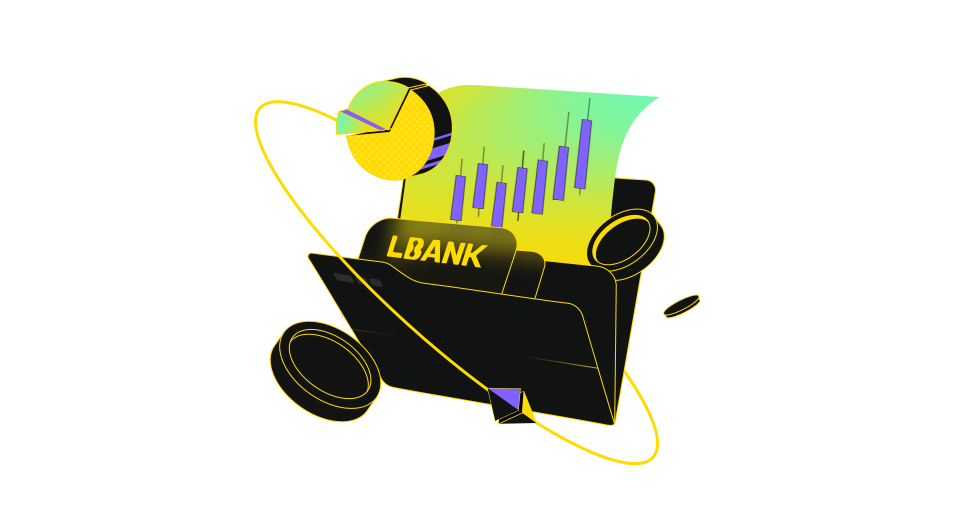"Understanding pivot points: Calculation methods and their application in trading strategies."
What Are Pivot Points? How Are They Calculated and Used?
Pivot points are a widely used technical analysis tool that helps traders identify potential support and resistance levels in financial markets. These levels are derived from the previous day’s high, low, and closing prices, providing a framework for understanding market behavior and making informed trading decisions. Pivot points are particularly valuable for day traders and short-term traders who rely on intraday price movements to execute their strategies.
### What Are Pivot Points?
Pivot points are calculated levels that act as indicators of potential price movement. The central pivot point (PP) represents the average of the previous day’s high, low, and closing prices. Around this pivot point, additional levels of support and resistance are calculated, which help traders anticipate where the price might reverse or continue its trend. These levels are not static; they are recalculated daily based on the most recent market data.
Pivot points are especially useful in volatile markets, as they provide clear reference points for traders to monitor price action. By identifying key levels, traders can make decisions about entry and exit points, stop-loss orders, and take-profit targets.
### How Are Pivot Points Calculated?
The calculation of pivot points is straightforward and relies on the previous day’s price data. The formulas for calculating the pivot point and its associated support and resistance levels are as follows:
1. **Pivot Point (PP)**: (High + Low + Close) / 3
This is the central level around which the market is expected to fluctuate.
2. **Support 1 (S1)**: 2 × PP - High
This is the first level of support below the pivot point.
3. **Support 2 (S2)**: PP - (High - Low)
This is the second level of support, further below the pivot point.
4. **Resistance 1 (R1)**: 2 × PP - Low
This is the first level of resistance above the pivot point.
5. **Resistance 2 (R2)**: PP + (High - Low)
This is the second level of resistance, further above the pivot point.
Where:
- High: The highest price of the previous day.
- Low: The lowest price of the previous day.
- Close: The closing price of the previous day.
These levels provide a roadmap for traders, indicating where the price might encounter obstacles or find support during the trading session.
### How Are Pivot Points Used in Trading?
Pivot points are versatile tools that can be used in various ways to enhance trading strategies. Here are some common applications:
1. **Identifying Trend Reversals**:
Pivot points help traders spot potential reversals in price trends. For example, if the price approaches a support level (S1 or S2) and bounces back, it could signal a reversal of a downtrend. Conversely, if the price approaches a resistance level (R1 or R2) and breaks through, it might indicate a continuation of an uptrend.
2. **Setting Stop-Loss Orders**:
Traders often place stop-loss orders just below support levels or above resistance levels. This helps limit potential losses if the price moves against their position.
3. **Taking Profit Targets**:
Pivot points can also be used to set take-profit targets. For instance, a trader might aim to close a position when the price reaches a resistance level, locking in profits.
4. **Combining with Other Indicators**:
Many traders use pivot points in conjunction with other technical indicators, such as moving averages, the Relative Strength Index (RSI), or Bollinger Bands. This combination provides a more comprehensive view of market conditions and improves the accuracy of trading signals.
5. **Navigating Volatile Markets**:
In highly volatile markets, such as cryptocurrencies, pivot points are particularly useful. They provide clear reference points that help traders manage risk and capitalize on price swings.
6. **Algorithmic Trading**:
With the rise of algorithmic trading, pivot points have been integrated into automated trading systems. These systems use pivot points to execute trades with precision and speed, enhancing overall trading efficiency.
### Advantages of Using Pivot Points
- **Simplicity**: Pivot points are easy to calculate and interpret, making them accessible to traders of all experience levels.
- **Versatility**: They can be applied to various markets, including stocks, forex, commodities, and cryptocurrencies.
- **Real-Time Application**: Pivot points are recalculated daily, ensuring they reflect the most recent market conditions.
- **Risk Management**: By identifying key levels, pivot points help traders set stop-loss and take-profit orders, reducing potential losses and locking in gains.
### Limitations of Pivot Points
While pivot points are a powerful tool, they are not foolproof. Traders should be aware of their limitations:
- **Overreliance**: Relying solely on pivot points without considering broader market conditions can lead to false signals.
- **Market Noise**: In highly volatile or choppy markets, pivot points may produce less reliable levels.
- **Lagging Nature**: Since pivot points are based on previous day’s data, they may not always reflect sudden changes in market sentiment.
### Conclusion
Pivot points are a fundamental tool in technical analysis, offering traders valuable insights into potential support and resistance levels. By understanding how to calculate and use pivot points, traders can enhance their ability to identify trends, manage risk, and execute profitable trades. While pivot points are not a standalone solution, they are most effective when combined with other technical indicators and a thorough understanding of market conditions. As technology advances and trading strategies evolve, pivot points remain a cornerstone of modern trading practices, providing clarity and structure in an often unpredictable market environment.
Pivot points are a widely used technical analysis tool that helps traders identify potential support and resistance levels in financial markets. These levels are derived from the previous day’s high, low, and closing prices, providing a framework for understanding market behavior and making informed trading decisions. Pivot points are particularly valuable for day traders and short-term traders who rely on intraday price movements to execute their strategies.
### What Are Pivot Points?
Pivot points are calculated levels that act as indicators of potential price movement. The central pivot point (PP) represents the average of the previous day’s high, low, and closing prices. Around this pivot point, additional levels of support and resistance are calculated, which help traders anticipate where the price might reverse or continue its trend. These levels are not static; they are recalculated daily based on the most recent market data.
Pivot points are especially useful in volatile markets, as they provide clear reference points for traders to monitor price action. By identifying key levels, traders can make decisions about entry and exit points, stop-loss orders, and take-profit targets.
### How Are Pivot Points Calculated?
The calculation of pivot points is straightforward and relies on the previous day’s price data. The formulas for calculating the pivot point and its associated support and resistance levels are as follows:
1. **Pivot Point (PP)**: (High + Low + Close) / 3
This is the central level around which the market is expected to fluctuate.
2. **Support 1 (S1)**: 2 × PP - High
This is the first level of support below the pivot point.
3. **Support 2 (S2)**: PP - (High - Low)
This is the second level of support, further below the pivot point.
4. **Resistance 1 (R1)**: 2 × PP - Low
This is the first level of resistance above the pivot point.
5. **Resistance 2 (R2)**: PP + (High - Low)
This is the second level of resistance, further above the pivot point.
Where:
- High: The highest price of the previous day.
- Low: The lowest price of the previous day.
- Close: The closing price of the previous day.
These levels provide a roadmap for traders, indicating where the price might encounter obstacles or find support during the trading session.
### How Are Pivot Points Used in Trading?
Pivot points are versatile tools that can be used in various ways to enhance trading strategies. Here are some common applications:
1. **Identifying Trend Reversals**:
Pivot points help traders spot potential reversals in price trends. For example, if the price approaches a support level (S1 or S2) and bounces back, it could signal a reversal of a downtrend. Conversely, if the price approaches a resistance level (R1 or R2) and breaks through, it might indicate a continuation of an uptrend.
2. **Setting Stop-Loss Orders**:
Traders often place stop-loss orders just below support levels or above resistance levels. This helps limit potential losses if the price moves against their position.
3. **Taking Profit Targets**:
Pivot points can also be used to set take-profit targets. For instance, a trader might aim to close a position when the price reaches a resistance level, locking in profits.
4. **Combining with Other Indicators**:
Many traders use pivot points in conjunction with other technical indicators, such as moving averages, the Relative Strength Index (RSI), or Bollinger Bands. This combination provides a more comprehensive view of market conditions and improves the accuracy of trading signals.
5. **Navigating Volatile Markets**:
In highly volatile markets, such as cryptocurrencies, pivot points are particularly useful. They provide clear reference points that help traders manage risk and capitalize on price swings.
6. **Algorithmic Trading**:
With the rise of algorithmic trading, pivot points have been integrated into automated trading systems. These systems use pivot points to execute trades with precision and speed, enhancing overall trading efficiency.
### Advantages of Using Pivot Points
- **Simplicity**: Pivot points are easy to calculate and interpret, making them accessible to traders of all experience levels.
- **Versatility**: They can be applied to various markets, including stocks, forex, commodities, and cryptocurrencies.
- **Real-Time Application**: Pivot points are recalculated daily, ensuring they reflect the most recent market conditions.
- **Risk Management**: By identifying key levels, pivot points help traders set stop-loss and take-profit orders, reducing potential losses and locking in gains.
### Limitations of Pivot Points
While pivot points are a powerful tool, they are not foolproof. Traders should be aware of their limitations:
- **Overreliance**: Relying solely on pivot points without considering broader market conditions can lead to false signals.
- **Market Noise**: In highly volatile or choppy markets, pivot points may produce less reliable levels.
- **Lagging Nature**: Since pivot points are based on previous day’s data, they may not always reflect sudden changes in market sentiment.
### Conclusion
Pivot points are a fundamental tool in technical analysis, offering traders valuable insights into potential support and resistance levels. By understanding how to calculate and use pivot points, traders can enhance their ability to identify trends, manage risk, and execute profitable trades. While pivot points are not a standalone solution, they are most effective when combined with other technical indicators and a thorough understanding of market conditions. As technology advances and trading strategies evolve, pivot points remain a cornerstone of modern trading practices, providing clarity and structure in an often unpredictable market environment.
Related Articles
What is Cumulative Range Chart?
2025-03-24 11:51:25
What are false breakouts? How can price action help identify them?
2025-03-24 11:51:25
What is Behavioral Sentiment Array?
2025-03-24 11:51:25
How wide should my stop-loss be?
2025-03-24 11:51:24
What is the relationship between stock prices and interest rates (bond yields)?
2025-03-24 11:51:24
How can I build resilience and bounce back from losing trades or setbacks?
2025-03-24 11:51:24
Can technical analysis be used to identify market bubbles?
2025-03-24 11:51:23
What is the concept of "lookback period" in technical indicators?
2025-03-24 11:51:23
How do stock splits and dividends affect technical charts?
2025-03-24 11:51:23
What is Depth of Market Gauge?
2025-03-24 11:51:22
Latest Articles
How to Buy Crypto Using PIX (BRL → Crypto)
2025-06-21 08:00:00
How does DeFi differ from traditional finance systems?
2025-05-22 10:16:47
How are RWAs different from traditional financial assets?
2025-05-22 10:16:47
Can you elaborate on how equitable distribution is achieved in the new tokenomic model?
2025-05-22 10:16:46
What implications does this collaboration have for blockchain gaming acceptance?
2025-05-22 10:16:46
How does U.S. Steel Corporation's performance compare to its competitors in light of the new price target?
2025-05-22 10:16:46
How complex are DeFi protocols involved in yield farming as mentioned in the research news about CoinGecko's Earn Platform?
2025-05-22 10:16:45
Are there fees associated with different deposit methods on Binance?
2025-05-22 10:16:45
How important does Buterin consider institutional adoption of cryptocurrencies?
2025-05-22 10:16:45
What is Mashinsky's perspective on the role of self-regulation within the crypto industry?
2025-05-22 10:16:44

Limited-Time Offer for New Users
Exclusive New User Benefit, Up to 6000USDT
Hot Topics
Technical Analysis

1606 Articles
DeFi

90 Articles
MEME

62 Articles
Cryptocurrency Rankings
Top
New Spot
Fear and Greed Index
Reminder: Data is for Reference Only
45
Neutral